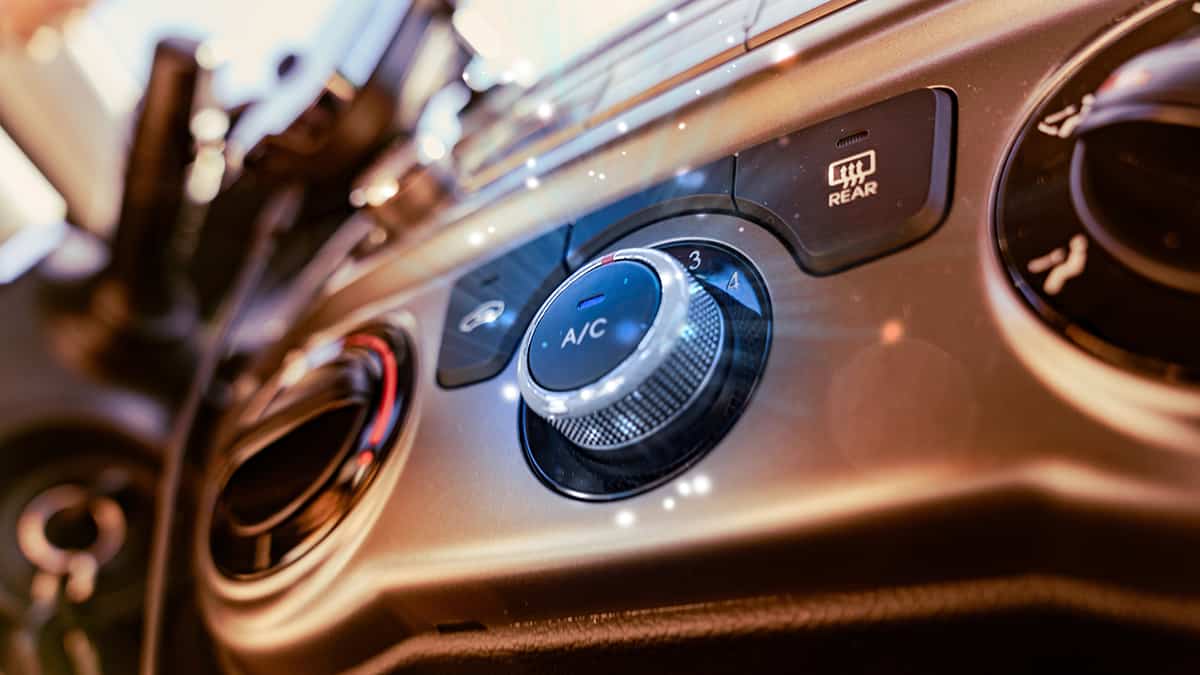The air conditioning system in a car is more than just a way to beat the summer heat. It’s a complex component that can affect everything from your personal comfort to your vehicle’s fuel efficiency. The ideal temperature settings for your car’s AC help you enjoy your ride and maintain optimal system performance.
The ideal temperature for your car’s AC should be around 21-27°C (69-80°F). This range provides a comfortable cabin environment while optimizing fuel efficiency.
This article will dive into the intricacies of car AC temperatures, providing a comprehensive guide that includes an in-depth temperature chart.
Ideal Car AC Temperature

The ideal temperature setting for your car’s air conditioning (AC) system depends on various factors such as the weather, the vehicle’s make and model, and personal comfort preferences. Setting the temperature at the right level ensures comfort and the overall health of the AC system.
How Car AC Works
Car air conditioning systems operate by compressing a refrigerant, typically R-134a, which becomes hot during compression. This hot gas then passes through a condenser, losing heat and becoming a liquid.
The liquid refrigerant is expanded through a valve into a low-pressure area, turning it back into a gas but at a lower temperature. This cold gas is then passed through an evaporator inside the car, where the air blown across it is chilled before entering the cabin.
Balancing Comfort, Fuel Efficiency, and Wear & Tear
Finding the right balance can be a challenge, but it’s worth doing to ensure a comfortable ride. Here’s how to strike that balance:
- Comfort: Your personal comfort should always be a priority. Adjusting the temperature within the ideal range mentioned earlier can ensure a pleasant driving experience.
- Fuel Efficiency: Running the AC can affect your car’s fuel efficiency. Keeping it within the optimal temperature range ensures that the system is not overworked.
- Wear and Tear: Constantly running the AC at very low temperatures can strain the system, leading to wear and tear. You should maintain a moderate temperature that is neither too cold nor too hot to prolong the life of the AC system.
Car AC Temperature Chart
This car AC temperature chart is a guide that helps car owners set the optimal temperature in their vehicles. Here’s how the chart is broken down:
- Outside Temperature: This is the external temperature which affects how the AC should be set.
- Car Model: Different cars may require slightly different settings.
- Recommended AC Temperature: This is the advised setting based on the outside temperature and car model.
Temperature Ranges for Different Car Models
Different car models may have various optimal AC temperature settings. Here’s a general chart for some common car types:
| Outside Temperature | Sedan | SUV | Sports Car | Compact Car |
| 15-20°C (59-68°F) | 21°C (70°F) | 22°C (72°F) | 20°C (68°F) | 21°C (70°F) |
| 21-25°C (69-77°F) | 23°C (73°F) | 24°C (75°F) | 22°C (72°F) | 23°C (73°F) |
| 26-30°C (78-86°F) | 25°C (77°F) | 26°C (79°F) | 24°C (75°F) | 25°C (77°F) |
| 31-35°C (87-95°F) | 27°C (80°F) | 28°C (82°F) | 26°C (79°F) | 27°C (80°F) |
Car Features That Affect Ideal AC Temperature
AC temperature settings can differ due to specific car design features, such as:
- Cabin Size: Different car types, such as SUVs, sedans, compact cars, and sports cars, have varying cabin sizes. A larger cabin may require a different temperature setting to cool or heat the space efficiently compared to a smaller cabin.
- AC System Design: The design and capacity of the AC system might vary between different car models. Luxury vehicles may have more advanced climate control systems, while economy models might have simpler systems. These variations can lead to different optimal temperature settings.
- Window and Insulation Characteristics: Cars with larger windows or less insulation may heat up more quickly, affecting the necessary AC temperature. Conversely, cars with tinted windows or better insulation might retain cool air longer.
- Engine Heat: Different car types might generate varying amounts of heat from the engine that ultimately affect the internal temperature. A high-performance sports car might generate more engine heat compared to a compact car, leading to different AC needs.
- Climate Control Zones: Some vehicles offer multi-zone climate control that cool down different areas of the car based on specific temperature settings. This feature might influence the recommended temperature settings for that car type.
How to Measure a Car’s AC Temperature

Many cars rely on a dial system that controls how cold the AC is. This feature, while incredibly easy to use, doesn’t help much in determining the temperature of your car’s interior. To get the optimal AC temperature, thus maximizing fuel efficiency and comfort, you’ll need to manually measure your car’s AC temperature for the different fan speeds.
Using a Digital Thermometer
A digital thermometer is a straightforward and accurate tool to measure your car’s AC temperature.
- Place the probe of the digital thermometer into the air vent.
- Wait for the reading to stabilize. It usually takes about a minute.
- Note down the temperature, and compare it with the recommended range for your car model and outside temperature.
Using an Infrared Thermometer
An infrared thermometer can provide a quick and non-contact measurement.
- Aim the infrared thermometer directly at the air vent.
- Press the trigger to take a reading.
- The temperature will be displayed on the screen.
After recording the AC temperature for each speed setting, you should have a much easier time figuring out which fan speed to use based on outdoor temperatures.
FAQs
1. Can I customize my car’s AC settings for better comfort?
Yes, customizing your car’s AC settings for better comfort is possible. Most modern vehicles offer features like dual-zone climate control, allowing different temperature settings for the driver and front passenger. You can also adjust fan speed, direction, and even utilize rear climate control if available. More advanced customizations, like installing high-efficiency filters or additional vents, might require professional assistance.
2. How does car AC impact fuel efficiency?
Running the car’s AC can indeed impact fuel efficiency. The engine powers the air conditioning compressor, so when the AC is on, it requires additional energy, leading to increased fuel consumption. The actual effect on fuel efficiency can vary based on several factors:
- AC Settings: Higher AC settings (colder temperatures and higher fan speeds) typically use more fuel.
- Vehicle Age and Model: Newer vehicles usually have more efficient AC systems, reducing the impact on fuel consumption.
- Driving Conditions: Using the AC in stop-and-go traffic may have a more significant effect compared to highway driving.
- Maintenance: A well-maintained AC system will operate more efficiently and minimizes impact on fuel efficiency.
3. Should I run the AC during winter?
Running the AC during winter can be beneficial for several reasons:
- Defogging Windows: The AC system helps to remove moisture from the inside of the vehicle. Using the AC with the defrost setting can quickly clear fogged-up windows, improving visibility.
- Maintaining Seals: Regular use of the AC, even in winter, helps keep the seals within the system lubricated and prevents them from drying out. This helps in maintaining the system’s overall efficiency and longevity.
- Climate Control: If your car has an automatic climate control system, it may use the AC to maintain the desired cabin temperature, even in cold weather.
However, running the AC continuously during winter might not be necessary, and you can turn it off once the windows are clear, or the cabin has reached a comfortable temperature. Most of Your comfort matters—if it’s too cold, shut the AC off when it’s snowing!






